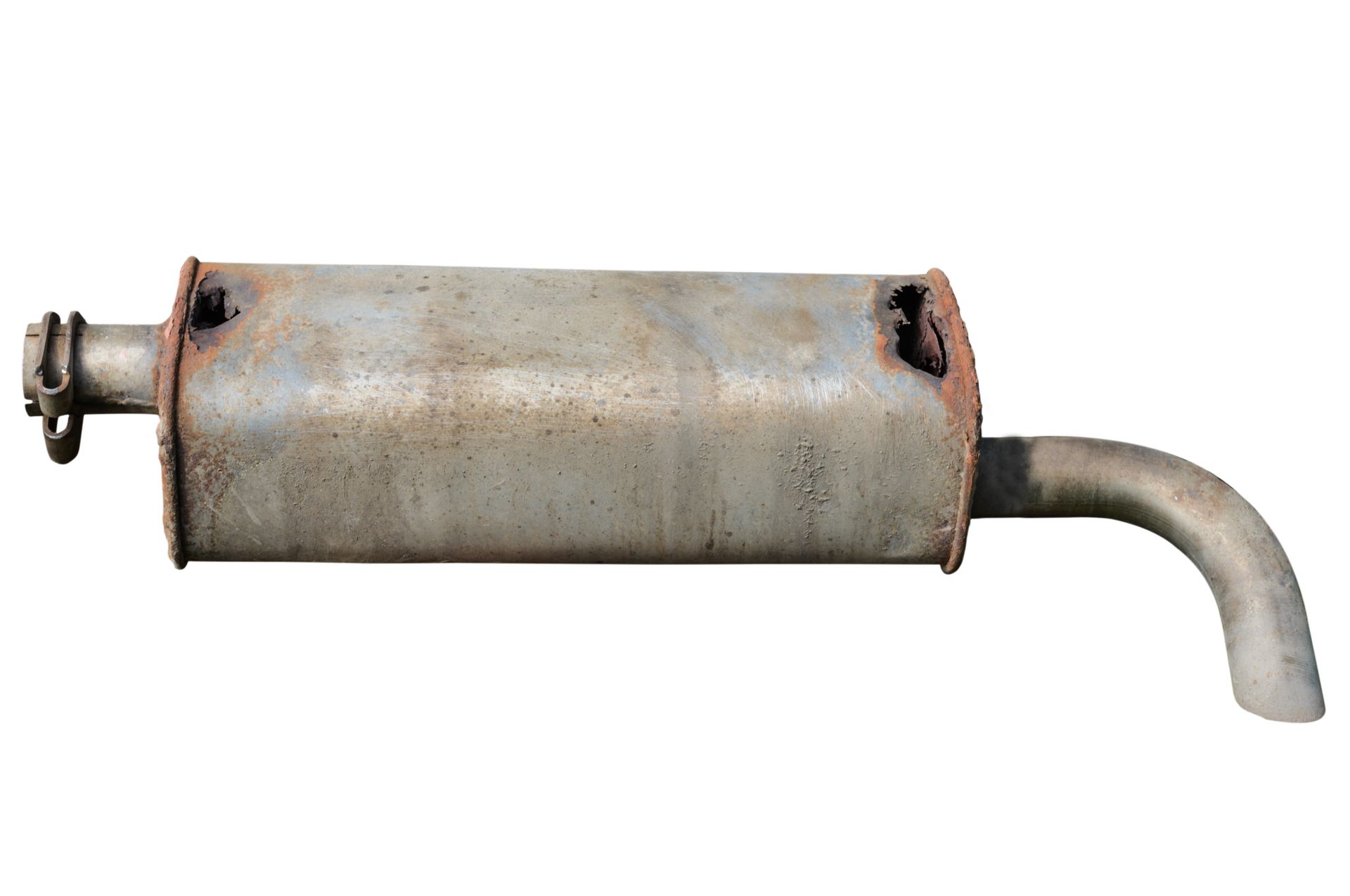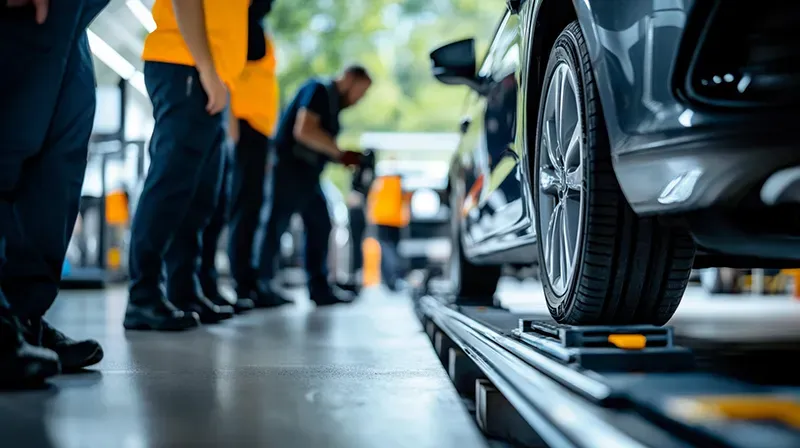Tips to Saving Money When Buying New Tires
Getting new tires for your vehicle is no easy task. People shopping for tires are often stuck sifting through the overwhelmingly diverse range of tire types, sizes, and brands on the market today. And since your choice in tires can affect everything from car maintenance requirements to gas mileage – not to mention how long you go without changing them again – it is worth making the right decision. Before you buy, read through this guide to all the information necessary to get a tire that’s right for your vehicle, at the right price.
Seasonal Tires: Do You Need to Switch Tires For Winter?
Before 1977, when Goodyear Tire and Rubber Company released the very first “all season” tire, people in temperate climates had to change their tires along with the change of the seasons. Some people, especially those who have been driving for many years or drive an older car, still believe they may need to change their tires with the coming of winter and summer. However, all season tires have now almost entirely replaced winter and summer tires. The vast majority of modern cars now come with all season tires, thanks to benefits including:
- Working on vehicles driving on a variety of different conditions and terrains
- Having relatively good traction on slick, wet roads because of their intricate tread patterns that act to draw moisture away from the underside of the tire
- Staying fully functional with 100% traction in cold weather temperatures as low as about 40 degrees Fahrenheit (about 4 degrees Celsius)
- Being functional when used on almost all types of cars, ranging from SUVs to sedans and from trucks to minivans
- Retaining decent, but reduced, traction in cold weather temperatures below 40 degrees Fahrenheit (when all season tire rubber begins to harden)
- Having a better life expectancy compared to tires that are designed for vehicles driving in specific conditions (some all season tires last for as long as 80,000 miles and can be worn down to as little as 1/16 th of an inch tread remaining)
While these benefits are enough for many vehicles, there are certain circumstances that require seasonal tire changes.
“All season meant that the tires were good for use in most places for most of the year,” says auto tech reporter Chris Teague in a Forbes article on the subject. “It did not mean that a driver can have the tires installed and forget about it. Though most new vehicles today come with some variation of the factory-installed all-season tire, there are still situations that can seriously challenge all-season tires and push them beyond their limits.”
According to Teague, all season tires are the “jack of all trades, master of none.” They have tread patterns and a type of rubber compounds that gives them sufficient traction to work decently on wet surfaces and a fairly broad range of different temperatures. All season tires are also designed to maintain operation in sleet, hail, and light snow. As such, drivers can still keep them on their vehicle all year – in most weather. The rubber compounds that are used to make all season tires are engineered to retain their flexibility and pliability, even when the weather drops down near freezing. Still, they aren’t necessarily as universally applicable as their name might suggest.
“Even though the term ‘all season’ implies the tires are good in all seasons, that isn’t the case,” Teague writes. “They are engineered to have year-round pliability, but all-season tires aren’t a suitable stand-in for dedicated winter tires. Nor will they provide maximum grip in warm weather. Tire makers sacrifice maximum warm-weather grip to create a longer-lasting tire. That also means a dedicated winter tire is ideal in the coldest climates.”
However, there are some other options for drivers that don’t want to swap out their tires but live in very cold areas or do not want to take a risk if unusually cold weather strikes. Nowadays, there are essentially two types of all season tires that work to get through cold temperatures. These are “ high-performance ” all season tires and “ grand touring ” all season tires. The high-performance all season tire option allows better vehicle handling when compared to regular all season tires. They have better traction on the road and some drivers find that they feel more sporty to drive, albeit at the cost of some cold weather traction. High-performance all season tires are designed for more aggressive drivers and sportier cars.
Grand touring all season tires, on the other hand, usually have the discreet, minimalistic aesthetics of high-performance all season tires while driving better on winter weather roads at the expense of some of their handling capacity.
In recent years, a new type of grand touring all season tires called “all weather” tires has made a splash in the auto industry All weather tires have cold weather and snow traction ratings that are almost as good as specialized winter tires, while still featuring comparable performance in other functions relative to regular all season tires. All weather tires can be identified by a logo of a snowflake within a mountain, located on the tire's side wall.
Tire Sizing
The variety of different sizes available to people looking to buy tires can be very confusing, and many folks don’t even know where to find out what size they need to purchase. Fortunately, tires have a great deal of information on their sidewalls . A tire size rating on the sidewall of your tires might look something like this:
P225/50/R17 98H
That may seem like the result of a cat jumping on a keyboard, but it is actually a specific series of measurements that can be used to determine the tire size.
The letter “P” right at the beginning indicates that your tire is a passenger tire. Specifically, the P stands for “P-Metric.” Most personal vehicles are P-Metric type tires, but other types (indicated by different letters, or the absence of any letters at all) have extra considerations that are discussed below.
The “225” immediately following the letter(s) is the measurement of the tire section width, which is the breadth of the tire from sidewall to sidewall (in millimeters). Note that there are 25.4 millimeters per inch. Also be aware that the tire section width measurement varies depending on the rim to which it is fitted.
The “50” immediately following the first slash in the tire size rating is the two-figure aspect ratio. This is a percentage that compares the tire's section height with the tire's section width. In this case, the aspect ratio of 50 (percent) means that the tire's section height is 50 percent of the tire's section width. The two-figure aspect ratio can be calculated by dividing height by width, and then multiplying the resulting number by 100.
The “R” immediately following the slash after the two-figure aspect ratio identifies the construction that was utilized within the tire’s casing. R, in this example, represents radial construction. If there is a B, that stands for belted bias. If there is a D, it stands for diagonal bias construction. Different construction types are somewhat important for some drivers, so consider doing some research before buying.
The “17,” which is the final measurement listed in the size dimensions, is the diameter of the wheel rim. This is most often measured in inches, but other measurements may be used so be aware that it could be in centimeters.
What if the Tire Size Reading Doesn’t Begin With the Letter P?
Although most ordinary personal and civilian vehicles sold in the United States have tires whose size reading starts with the letter P, there are other possibilities. These are important to understand to ensure that you purchase the right size and type of tire.
As mentioned above, the letter P at the beginning of the tire size reading indicates a “P-Metric” tire type and size designation. In the recent past, almost all personal cars came tires that had a P-Metric size designation. Today though, “Metric” tires (also referred to as “Hard-Metric” or “Euro-Metric” tires) have become more popular after formerly being limited to overseas car tires. Metric tires are identifiable by the absence of any letter at the beginning of the size reading, and the measurements will begin with the tire section width measurement. Both the P-Metric and the Metric tire size designation are standard on sedan tires, minivan tires, SUV tires, and most light-duty pickup truck tires.
The letter “LT” at the beginning of the tire size reading indicates a “Light Truck” tire type and size designation. These are designed for heavy load trucking, towing, and off-road driving durability. Some trucks, fully sized vans, and fully sized SUVs come from the factory with LT rated tires. LT tires are significantly more expensive than standard tires designated as P-Metric. This higher price tag is because LT tires have a lot of extra material in the sidewall, as well as under the tread, that is designed to protect the tire from damage caused by driving off of the road or carrying heavy loads. In addition, the cords in an LT designated tire are made with a larger gauge than ordinary P-metric tires. This is another design feature that helps LT tires remain durable while carrying heavier loads. In most cases, LT rated tires will have a thicker rubber in the sidewall, an additional steel belt, and a deeper tread. These design features are implemented for more protection from rougher terrains, heavier terrains, and harsher weather conditions than P-Metric tires can handle. LT tires are also typically 8-ply (for Load Range D) or 10-ply (for Load Range E). Standard Metric and P-Metric tires, on the other hands, generally have a 4-ply or 6-ply equivalent sidewall. However, all of these design features in LT rated tires that improve their performance have some notable downsides. The trade-offs of the material added to LT tires include a harsher and bumpier riding experience, lowered fuel efficiency (and greater costs at the gas pump), and less responsive handling.
Should Truck Drivers Use P-Metric or Light Truck Tires?
The type of tire that you should select for a truck depends primarily on how the truck will be used. P-Metric tires are sufficient for a pickup truck owner that does not go off paved roads (this does not include gravel roads), nor carry any heavy loads, nor tow a trailer of any kind. This is the reason why many ordinary half ton trucks arrive on the sale lot with P-Metric tires installed at the factory. If you buy a half ton pickup truck or fully sized SUV, and you seldom or never carry a heavy load or leave paved roads, then a run of the mill P-Metric rated tire will probably be a superior choice for your next replacement tire. They will drive more smoothly, handle better, last a lot longer, and be much more fuel efficient than a LT rated tire of the same size measurements.
P-Metric tires also save money for ordinary drivers. Since they drive more smoothly, they prevent collisions and damage to the car that can be costly and dangerous. The superior handling is another factor that helps to prevent car accidents. Since they last longer, the cost of replacement tires will be less. Since they are more fuel efficient, they save gas money at the pump, and it certainly doesn’t hurt to help the environment. And finally, they simply cost less because the cost of the tire itself is lower compared to LT rated tires.
If you have a truck, fully sized van, or fully sized SUV that arrives from the factory with LT tires, then it is a good idea to replace those tires with new LT tires when you need a tire change. It is usually okay to replace P-Metric tires with LT tires, but you should never replace LT tires that came pre-installed from the factory with P-Metric tires. Since they have a lower load capacity rating at maximum air pressure, the weight of the vehicle (especially if it is carrying a load, even a moderate or small load) can be too much for the tires and they can fail.
If you own a truck that you drive heavily loaded, or if you pull heavy trailer loads with your truck often, then you should probably think about swapping out your P-Metric tires with LT rated tires. For contractors, plumbers, gardeners, and other tradespeople who drive a truck or van that is loaded with equipment, materials, tools, machinery, or other work supplies frequently benefit from the fact that the firmer materials in LT tires means that they have less back and forth swaying.
“Vehicles like ¾ ton or larger pickup trucks, work vans and trucks, and other large vehicles that regularly carry heavy loads or pull heavy trailers will need LT tires,” wrote TireBuyer.com in their article breaking down the issue. “These tires are built differently than [P-Metric] tires – they’re built with more material and have sturdier sidewalls to handle the weight of the vehicle.”
That means that the truck or vans tend to have better handling when they are loaded. Other people may feel that the drive is a little bit bumpier, and find it harsher and not as comfortable as P-Metric tires are (especially when their fully sized van or truck is loaded). There is little that can be done about this, in terms of the tires. Upgraded shocks on the vehicle can help, but this is simply one of the several trade-offs that drivers must accept when they replace their P-Metric rated tires with a set of LT rated tires.
Treadwear Ratings and Where to Find Them
The Uniform Tire Quality Grade is a treadwear rating (also referred to as a treadwear grade) that is indicated by a number that is stamped on the tire sidewall. This correlates with the tire’s expected tire life. In the simplest terms and as the rating is intended, the higher the Uniform Tire Quality Grade treadwear rating is, the greater the lifespan of the tire. For example, a tire that has a treadwear rating of 600 has been predicted to have a lifespan that is about twice as long as a tire with a 300 rating, about three times as long as a tire with a 200 rating, and so on.
To understand how treadwear ratings might differ, and to get some simple real world points of reference, consider the fact that some standard touring all-season tires built for high mileage will typically have treadwear ratings in the range of 700 to 800. Motorsport tires for racing, in comparison, which are designed to have maximum grip may show a treadwear rating that is closer 100, or perhaps even lower. That is because for racing tires that can be swapped out as often as they need to be, the lifespan of the tire is a secondary concern and factors like grip and speed are far more important.
According to the National Highway Traffic Safety Administration, which collates and requires the Uniform Tire Quality Grade treadwear rating test, “treadwear grades are an indication of a tire's relative wear rate.”
“The higher the treadwear number is, the longer it should take for the tread to wear down,” wrote the National Highway Traffic Safety Administration in an article on their tire ratings system. “A control tire is assigned a grade of 100. Other tires are compared to the control tire. For example, a tire grade of 200 should wear twice as long as the control tire.”
According to the article, tires on the market today have this Uniform Tire Quality Grade treadwear rating breakdown:
- 15% are rated below 200
- 25% are rated 201 - 300
- 32% are rated 301 - 400
- 20% are rated 401 - 500
- 6% are rated 501 - 600
- 2% are rated above 600
How Can Treadwear Ratings Be Used to Research and Buy Tires?
Before all other considerations, it is important to understand the limits of the value of the treadwear rating information on a tire sidewall. The Uniform Tire Quality Grade treadwear rating is measured and mandated by the National Highway Traffic Safety Administration. While the testing process is required to use the same uniform methodology for every tire manufacturer – on paper – the National Highway Traffic Safety Administration does not independently test the rated tires, or assign or assess the ratings after viewing tests. In reality, it is the tire manufacturers themselves that have the responsibility to carry out the testing, or hire another company to do it.
That means that Uniform Tire Quality Grade treadwear ratings can not be fully trusted. They are not the result of tests done by an objective outside organization, nor are they even necessarily measured on a universal rating scale. As such, a treadwear rating of 600 from a certain tire manufacturer does not necessarily equate to a treadwear rating of 600 from a different tire manufacturer. As a result of this possible discrepancy, the real-life mileage or lifespan of two different manufacturer’s tires can end up being very different, even under the exact same driving conditions on the same vehicle.
Because of this potential difference between different tire manufacturers, the utility of Uniform Tire Quality Grade treadwear ratings as a tool to compare tires between separate manufacturers can be quite limited. However, they can still be useful when comparing between tires from the same manufacturer, especially if they are the same in other respects. For many people, they can even be the deciding factor. Tire manufacturers can be accused of exaggerating their own treadwear ratings to make their tire products come off as better than the competition, or in some cases even lowering the ratings and being unrealistically conservative with them (and they have often been accused of both in the past). However, within their own product range, the ratings should – roughly – correspond to actual testing results and can therefore be used to compare tires from the same manufacturer.
How Are Uniform Tire Quality Grade Treadwear Ratings Determined? Are They Reliable?
The “roughly” in the last sentence of the previous section is the result of problems with the testing methodology. According to TireReview.com, the Uniform Tire Quality Grade treadwear rating test process suffers from a number of different technical issues that make it less than ideal in terms of accuracy, universality, and reliability.
“The control tire is an old technology design and new batches of control tires are built every year,” they wrote in an article on the topic. “The new tires are rated versus the previous batch and the results are adjusted, but over the years, there has been some inflation of the test results. The test also tends to over rate tires with aspect ratios of 50 and lower.”
And the limitations to the Uniform Tire Quality Grade treadwear rating test process do not stop there.
“Another problem is that the results are subject to some interpretation by tiremakers,” according to the TireReview.com article. “Manufacturers are not required (nor would it be practical) to test the entire range of sizes of a particular tire, so they test a representative size or two and apply the results across the board. In practice, smaller sizes are more of a challenge because of their higher rpm rates. In addition, since treadwear ratings are assigned after a tire has only run 7,200 miles, the tire manufacturers need to extrapolate the wear data from a relatively low amount of actual treadwear.”
Still, given all of these limitations, Uniform Tire Quality Grade treadwear ratings are still somewhat helpful when deciding between different products from the same tire manufacturer. Comparing the treadwear ratings of tires from two (or more) manufacturers is less helpful, but it is not necessarily completely useless to consider it as a factor. Just be aware of the limitations when shopping, and look at other information such as independent reviews from experts and independent review sites like TrustPilot, the Better Business Bureau , and others.
In fact, there is usually some degree of correlation between the treadwear rating of a tire and its actual lifespan. The general pattern is that, across the different categories of tire types, sizes and manufacturers, it is not unusual for those tires that have a high Uniform Tire Quality Grade treadwear rating to get widely positive reviews from drivers about how long they last. For example, a tire that has a Uniform Tire Quality Grade treadwear rating of 400 may not last precisely two times as long as a tire that has a treadwear rating of 200. Still, it not necessarily an unsafe assumption that the tire with the treadwear rating of 400 will last noticeably longer than the one with a treadwear rating of 200. Given all these factors, if you are shopping for a set of tires that have good mileage and you want them to last for a while, a low treadwear rating is still a major red flag that probably means the tires could fall far short of your expectations for mileage and lifespan.
Overall, the Uniform Tire Quality Grade treadwear rating of a tire that you are considering buying should be used as one piece of information among others. It should not be the only consideration, but it can still be worth looking at. It is certainly an imperfect rating system, but considered alongside the tire mileage warranty it can be helpful.
Tire Maintenance?
It's important to consider your tires‘ condition and what maintenance you could do to help ensure they reach full-lifespan. Check out these seasonal tips on tire maintenance and how to get the most out of them.
Tire Mileage Warranty
The tire mileage warranty (also known as a tread-life warranty) is a potentially more accurate rating of tire life, and can be used to compare expected lifespan of tires that shoppers are thinking about purchasing. Although not all tires have a tire mileage warranty, many do, and this information can be found online or in the tire manufacturer’s marketing materials.
This warranty has an estimate of the mileage expected from the tires before they wear out. The usual rule of thumb for the tire manufacturing industry is that out of all drivers, the tire lifespan estimated in the warranty will exceed the actual lifespan for about 3 out of 4 drivers. The good news is that in most cases, even if your tires do get worn out before the warranty’s mileage estimate, they will give you credit for new tires. This credit is calculated as the percentage of miles the estimate came short, which is then discounted from a new tire. This discount and transaction is often handled by tire dealers, so ask them if they can arrange it.
However, tire retailers and manufacturers have a variety of requirements for their warranties, which is why some do not offer them. According to a Consumer Reports article on tire mileage warranties, these include:
- You have to have kept your original receipt, with your car’s odometer reading at the time of purchase, and whatever warranty papers came with the tires.
- If there was a recommended tire-rotation interval, say every 5,000 miles, be ready to supply written documentation for each of those services.
- The wear must also be absolutely even across the tread. If your tires ever got misaligned, or were under- or over-inflated so the wear isn’t quite uniform, there goes the warranty.
- All this has to happen within a specified time frame, say four or five years.
And Consumer Reports adds one more caveat that can cause problems.
“You can only recoup something on a prematurely worn-out tire if the tire is truly worn out, with the tread’s wear bars level with the top of the tread,” their article reads. “That indicates that you have only 2/32nds of an inch of tread, the legal minimum in most places. The danger is that a tire with that little tread will probably already have lost much of its hydroplaning resistance and snow traction.”
Tire Speed Ratings
Immediately following the sidewall’s tire size measurements is a speed rating. This rating displays the how fast the tires can go safely over a prolonged period of time, as well as the tire’s overall performance expectations. In most cases, tires used in high performance vehicles have a greater speed rating than cars designed for use as ordinary family sedans. Cars usually come with tires that have a speed rating that has been matched with the top speed that the vehicle can reach, plus some wiggle room as a safety margin. The speed rating is written as an alphanumeric code, with letters usually ranging from L to Y and numbers ranging from 75 (miles per hour) to 186 or more (miles per hour). Although lower letters and speeds are possible, they are not common. The letters correspond with speeds as shown below:
- L, 75 miles per hour
- M, 81 miles per hour
- N, 87 miles per hour
- P, 94 miles per hour
- Q, 100 miles per hour
- R, 106 miles per hour
- S, 112 miles per hour
- T, 118 miles per hour
- U, 124 miles per hour
- H, 130 miles per hour
- V, 149 miles per hour
- W, 168 miles per hour
- Y, 186 miles per hour
Like other tire ratings, speed ratings also have tradeoffs.
“Tires with higher speed ratings offer handling benefits that thrill some drivers, but there are tradeoffs,” according to Les Schwab’s article on the topic. “Since they’re usually made with softer rubber compounds and stiffer construction they offer better cornering, stopping power and steering response. But expect a little less ride comfort, lower performance in cold conditions and shorter tread life. Consumer Reports found that some H- and V-rated tires didn’t last as long as those rated for lower speeds, wearing out closer to 50,000 miles than 60,000 miles.”
Ready To Buy New Tires?
Even with an understanding of all we discussed here, buying tires isn’t exactly an easy task. Click here to see tips specifically about purchasing new tires. Take your time, do the research, and good luck out there!
Post New Tire Purchase: Tire Repair & Alignment Services
Once you've found the tires best for your vehicle and they begin to wear as you drive your way through daily life, you may run into problems. Eventually you'll need to realign those tires or maybe even repair a flat from a nail in the road. When that time comes, Paul Campanella’s Auto & Tire Centers are happy to help! For more than 35 years, Campanella’s has been Delaware’s premiere family owned and operated auto shop, winning multiple awards including earning an perfect A+ rating from the Better Business Bureau with full accreditation. Look over our Tire Services and let us know how we can help you!










